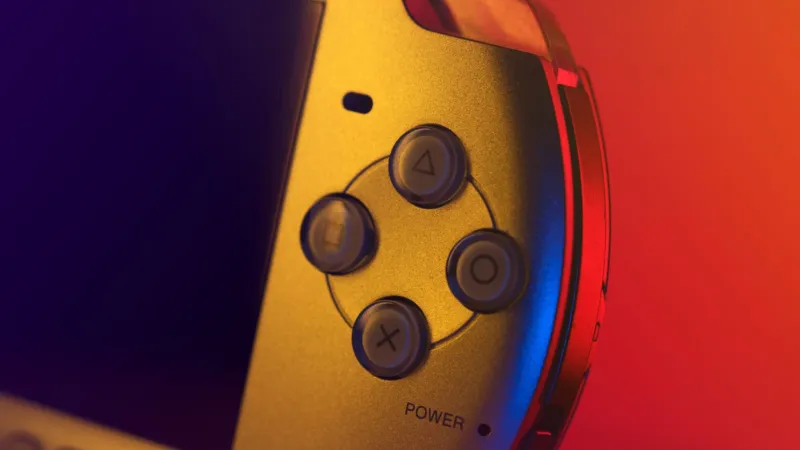Read An Exclusive Excerpt From A Handheld History, A Beautiful Coffee Table Book About Handheld Gaming

A Handheld History An upcoming hardcover 252-page coffee-table book is coming from Lost In Cult Retro Dodo. It’s, as the title suggests, a book about handheld gaming history.
This book features essays and words from handheld-oriented writers working in the gaming industry. Jason Bradbury, Janet Garcia (Lost In Cult, The Pen to Pixels), Jeff Grubb (VentureBeat), Mike Diver (GAMINGbible(, ), and many more. It also contains lots of original and beautiful art.
“Brought you in partnership with Retro Dodo – the internet’s leading retro gaming site – A Handheld HistoryThe website provides an opportunity to explore the systems and games that formed the legacy of portable devices. A Handheld History reads. This book is less a history and more a moving, personal account of decades of gaming memories. It will bring back those long car trips full of Tetriminos and Mewtwos. Then, it’ll take you on a fast-forward to the modern days of OLED screens, blockbusters, and your backpack.
You can find out more information about A Handheld HistoryBe sure to visit both Retro Dodo’sSite and Lost In Cult’sSite, where you can order a Standard Edition and / or Deluxe Edition. A Handheld History. The August pre-orders will ship. If you are interested in other goodies, such as print sets and bookplates, they are also available.
If interested, please read the following: Game Informer exclusive excerpt from A Handheld History below:
Here’s a portion of a PSP article in A Handheld History by Mike Diver, GAMINGbible

b_b_retro
The PlayStation Portable didn’t carry a particularly exciting name, being a fine example of a product doing what it says on the tin – or in this instance, doing what it says on a beautifully sleek and glossy black shell. The PlayStation Portable was first released in Japan. It then made its way to the US and Europe in March 2005. But PlayStation Portable – cut down to PSP from the first breath of its announcement at E3 2003 – didn’t need extravagant branding to make an impact. PlayStation was in its tenth year and had conquered the gaming world across two hugely successful home consoles – all it needed to do was offer players an opportunity to hold the franchises and characters that they loved in their hands and take them with them, and it’d be enough.
Only, that wasn’t all Sony was proposing. The PSP was announced not just as a gaming system, but as “the Walkman of the 21st century”. On stage at the Los Angeles Convention Center, in May 2003, the “father of the PlayStation” Ken Kutaragi – the man who’d fought for Sony to enter gaming in the mid-1990s with their original PlayStation console – told the attending media that PSP would offer “a world where all kinds of entertainment, like games, music and movies, are going to be fused together”. Kutaragi was convinced that this device could be more powerful than any other, including the Game Boy Advance with an illuminated screen and its SP model, which had a clamshell design.
And while Kutaragi wasn’t wrong – when it launched, the PSP’s capabilities far outstripped Nintendo’s alternatives – early adopters of Sony’s handheld didn’t rush to use it as much more than a gaming machine. It could play a wealth of movies and TV shows on a bright and crisp 480×272-pixel screen, capable of 16.77 million colours, via its bespoke Universal Media Disc format – dual-layer physical media capable of holding 1.8GB of data, a huge step up from Sony’s earlier MiniDisc which maxed out at 140MB – and wireless functionality connected the PSP to an online store where digital content could be downloaded. Smartphones became increasingly popular after the release of the iPhone, which was in 2007.

b_b_retro
And as for music, Sony was woefully late to the party – Apple’s first iPod had released in late 2001 and had already been dubbed a Walkman for the 21st century by the media. Although the PSP may be a great way to store your music and favorite artists, the iPod proved superior in every aspect.
The PSP’s multimedia potential was never a major selling point to its most important audience, however. Those who already enjoyed PlayStation’s products raced to pick up the new handheld – at launch in Japan the PSP almost sold out, selling over 171,000 units day one and leading to shortages at major retailers, and in the US it sold over half a million units in its first two days. In the UK, the PSP became the country’s fastest-selling new console at launch, with 185,000 units sold in four days (in comparison, Nintendo’s DS console managed 87,000 week one, in March 2005). Its total sales are estimated to have been 82 millions, making it the most popular handheld console other than the Nintendo DS.
Editor’s note: Retro Dodo says the image of the page and its layout are still in the design process, but the final layout will be very similar to this. These images were taken by photographer b_b_retro via Instagram.
#Read #Exclusive #Excerpt #Handheld #History #Beautiful #Coffee #Table #Book #Handheld #Gaming








